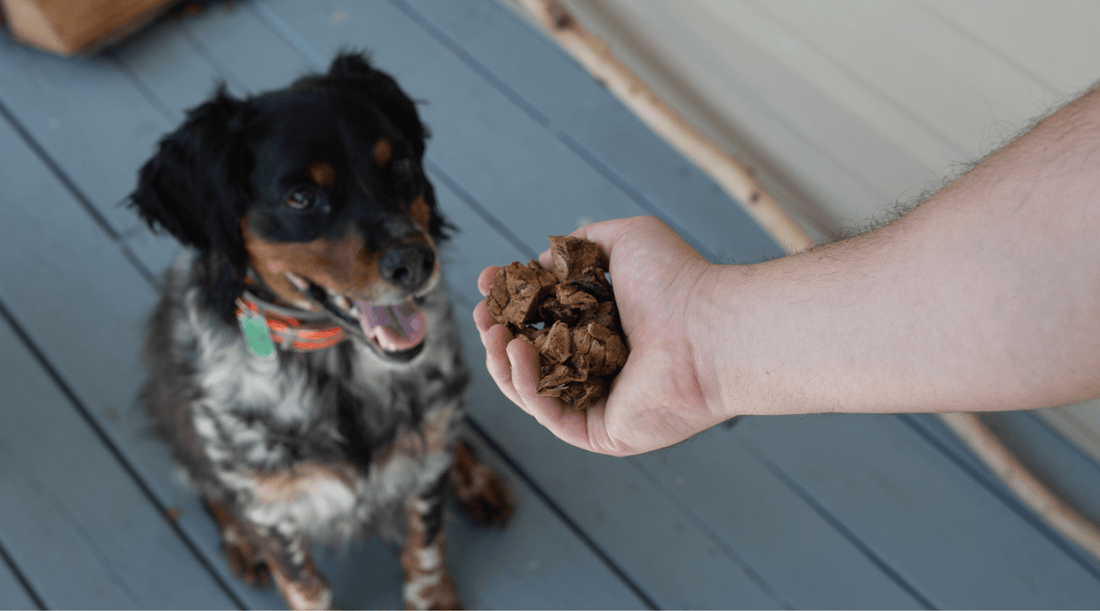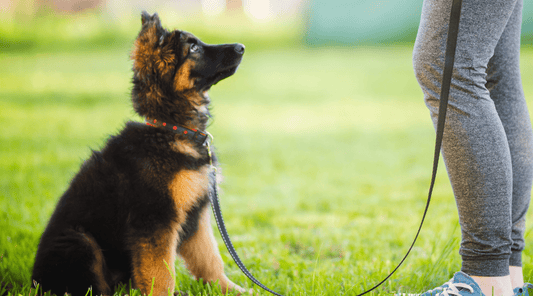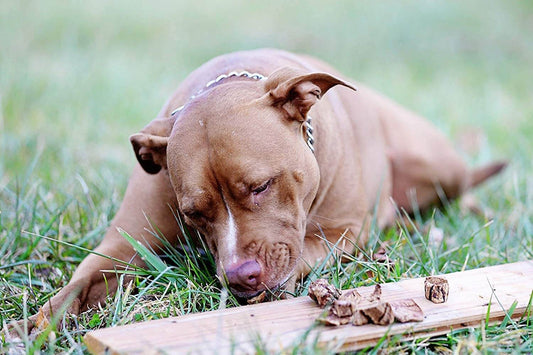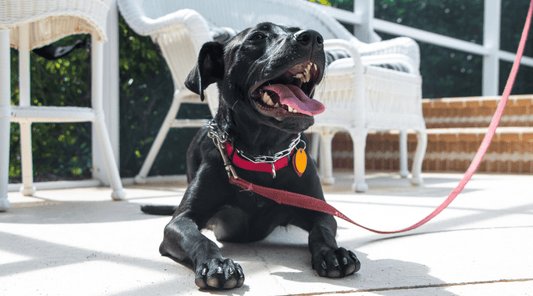
Positive Reward Training for Dogs: Building Trust with Healthy Treats
Dawn Miller Feb 13, 20254 Minute ReadPositive reward training for dogs is a pup parents' secret sauce for training a well-behaved K9.
You see, dogs are pack-oriented. They thrive on routine, hierarchy, and clear expectations. But they often struggle with how best to cooperate within your home because we don't speak "dog". Using well-timed rewards helps you communicate your expectations to generate a happy, well-adjusted dog.
Last Sunday afternoon was unseasonably warm for early February. So, our neighborhood park was buzzing with activity. Families were out, kids were playing, and dogs of all shapes and sizes enjoyed the rare winter sunshine.
I wasn't going to be left out. So I took Pixie and Bruno for a run around the soccer field—off-leash. I can do this confidently only because of the time we've put into positive reward training for dogs.
What Is Positive Reinforcement?
Positive training for dogs is a dog training methodology that focuses on rewards rather than punishment to socialize a dog or teach them tricks. It's also called "positive reinforcement training".
A well-timed treat says, "that's what I want." And if that treat is super tasty, it creates a dopamine spike.
Dopamine is the key to forming habits—for better or worse. This "reward hormone" helps the brain form neural pathways (habits) that result in a reward.
The stronger those paths become (from practice), the more automatic a habit becomes. And when I say habit, I mean command > performing an action.
Why Is Positive Reward Training the Better Way to Teach?
Positive reinforcement builds trust and makes you seem very predictable to your dog. They feel confident they know how things work and how to "earn" your affection.
This understanding can alleviate dog anxiety and improve mental health. It can also reduce destructive behavior and acting out. Most often, dogs do those things when they're bored or lonely and trying to get your attention.
Training with treats can also open up a whole new world of possibilities for you and your dog. I can take my dogs off-leash at the trails, and I never worry they won't return.
We can go to pet-friendly stores, street art festivals, and events together, and I know they'll follow my lead.
Even if there's a distraction like a rabbit, or worse, a bear, on the nature trail, I know Bruno will come to me when I call and be safe—every time.
I'm the one with the treats. And they know it.
Compare this to punishment-based training. If a dog thinks they will get yelled at or punished when they come to you, why would they? They learn to fear you. And if given the chance, they will run away.
How to Use Positive Reward Training For Dogs
Now, the fun part. I'll share the basic principles. And I encourage you to join the Free 7-Day Dog Training Challenge, where you'll find helpful videos, tips, and advice to train a pup in just 7 days.
1. Start with Healthy Dog Training Treats
You'll notice Amanda uses beef lung treats from K9 Connoisseur in her training challenge videos.
That's because the best training treats for dogs are single-ingredient, super-nutritious, and irresistible to dogs. They're just roasted grass-fed beef organ meat with no additives, preservatives, or fillers.
And they don't smell—to us humans, anyway. My terrier Pixie, on the other hand, can smell them from the other room.
2. Choose a Command to Teach
Start with a basic command and teach them one "trick" at a time.
Sit, stay, down—these are some of the easy ones. And they're also some of the most useful.
3. Use a Cheerful Tone
Dogs respond best to cheerful, encouraging tones and higher-pitched voices. Sometimes, if your dog is ignoring you, you can raise your pitch slightly, and they're more responsive.
4. Avoid Seeming Angry or Disappointed During Training
Negative words, body language, facial expressions, and even the scent of your stress sweat (which dogs keenly recognize) can give a dog mixed signals.
Try to exude positivity during training. If you're feeling discouraged, so does your dog.
5. Choose a Command Word
Command words are usually 1-3 words that you will use every time. Don't add words to the command (other than the dog's name). Keep it simple. Some useful command phrases include:
- Find it
- Leave it
- Down
- Go Poo
- Go to crate
- Ball
6. Practice Perfecting Your Timing
Give the best training treats for dogs at the precise moment they perform the command. Or when they move toward performing the command.
So, you're teaching sit, and they start to sit and then bounce up, reward them. Then try it again, until they get it.
Here's a look at how teaching a dog to sit might go.
- In a cheerful voice, say, "{dog's name}, sit." while gently pushing their bottom down.
- When they go down with your hand, reward them with a treat and praise.
- After they go down into a "sit" with your hand several times, do it with hand guidance. Just say, "{dog's name}, sit.".
- Reward with treats and praise.
7. Use a Clicker for More Complex Commands
A clicker is a hand-held training tool. You press the button, and it makes a clicking sound. Really, that's it! But that little click means a lot to a dog.
This marks the precise moment the dog followed the command. Then you give them a treat after it.
Even though there's a delay, they quickly learn that the clicker marks the action you want. They get a dopamine hit when they hear the clicker because they realize that it means they will get a treat.
For harder commands, it's challenging to perfectly time treats. So, the clicker ensures you mark the right action in your dog's mind. I was amazed at how much faster I could train Pixie when I used a clicker.
8. Always End on a High Note
In positive reward training for dogs, your goal is to keep the good vibes no matter what. Dogs learn faster that way.
So, let's say you're teaching your dog to "wave". And they just don't get it. Instead of getting frustrated and walking away, do this.
Return to something they know, like "sit". Reward them with a healthy dog treat and praise. Then, end the training session.
You're ensuring their last memory of training is positive. They'll look forward to training again. And in my experience, something will click in their mind the next time they try that command they couldn't do before.
9. Build Focus with Mental Stimulation in Between Training Sessions
In between training sessions, give them a dog bone.
Chewing on beef marrow filled dog bones is a stimulating activity for a dog. It's like you and me playing a puzzle game on our phones.
They will flip the bone, chew, and lick trying to figure out how to get the marrow out. This can improve mental focus for hyper dogs and stubborn dogs. It can enhance the effectiveness of your dog training sessions.
Try it. This really works.
10. Train Regularly with Dog Treats
If possible, keep reinforcing the commands they know daily. You'll find some you use all the time. So, focus on the less used ones during training to keep them in their memories.
Find new ones to teach them every few weeks or months. Experts think dogs can learn over 120 unique commands. So, you've got a lot to work with.
Available On:





